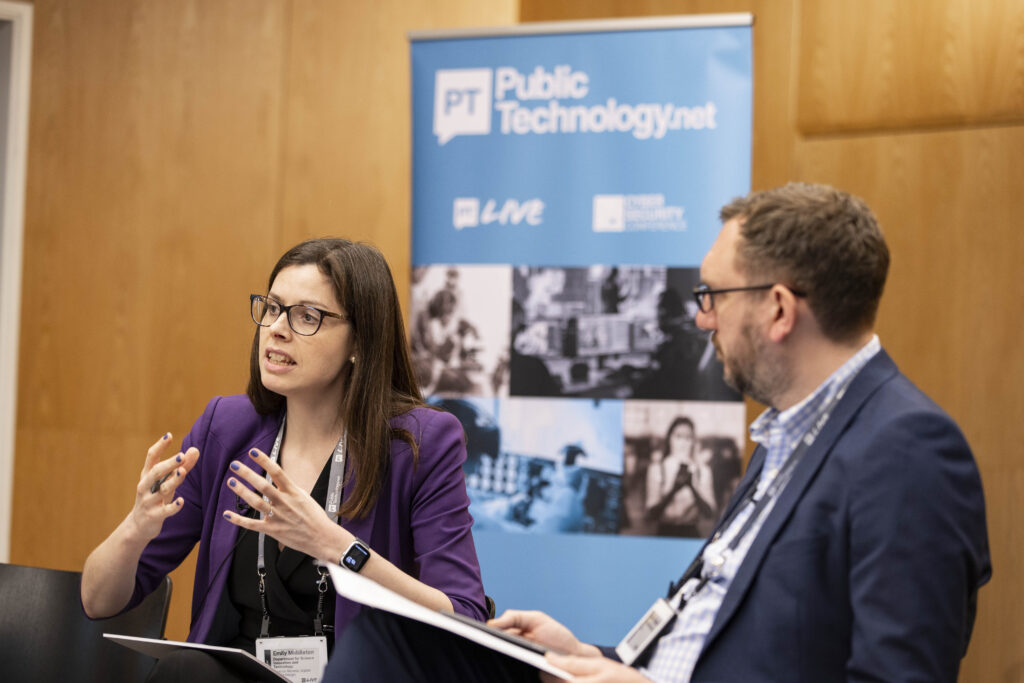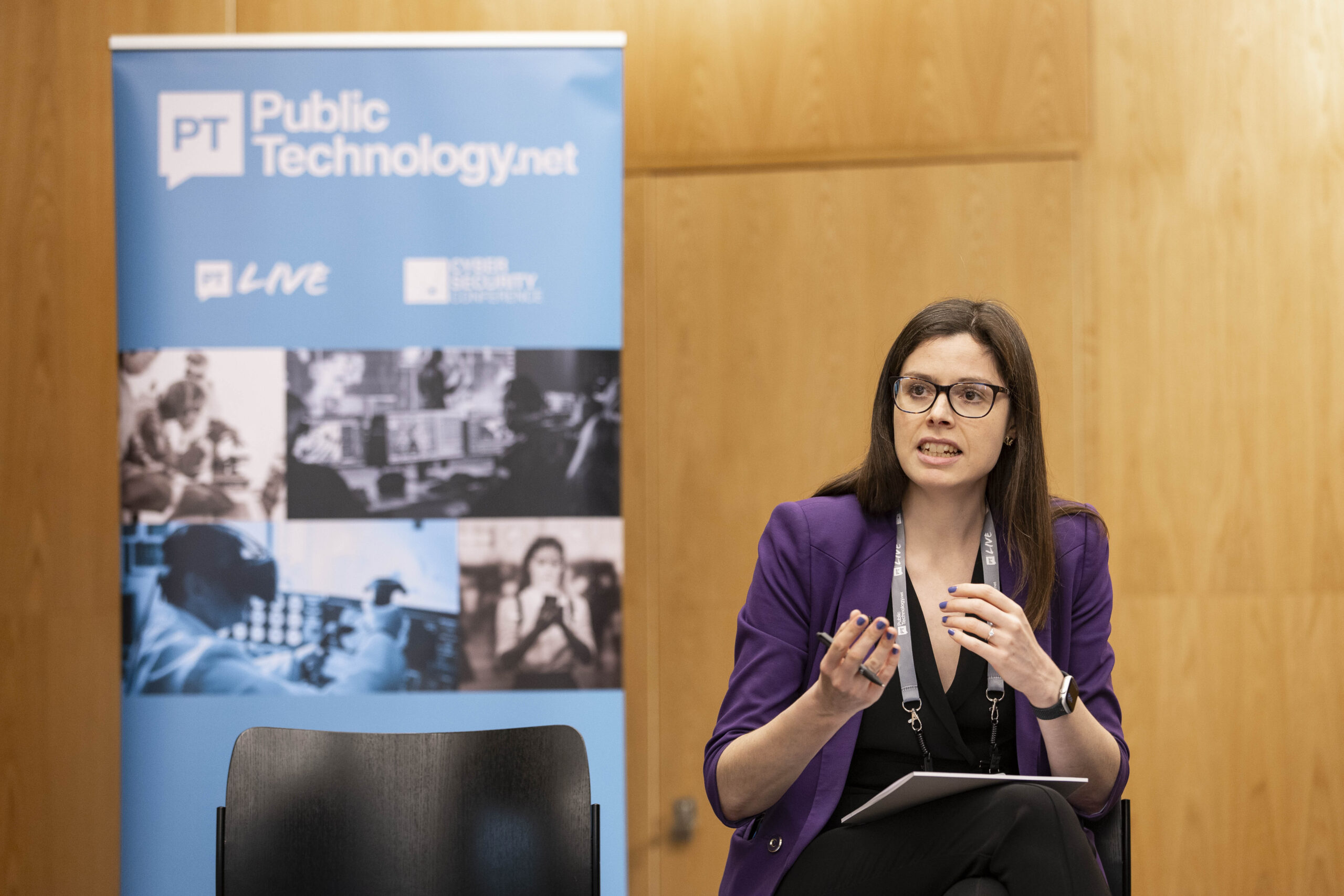Emily Middleton was brought into government to help shape its new digital centre but, as PublicTechnology finds out, the revamped tech hub hopes to support much broader transformation across Whitehall
“The State of digital government review that was published in January… gave a snapshot of the state of digital public services today and what needs to change. And the headline finding from that was that, too often, where there have been pockets of really brilliant progress, it has happened in spite of the system, rather than because of it.”
This was the context surrounding and informing the creation of government’s reimagined ‘digital centre’, according to Emily Middleton, who was recruited to oversee its establishment, having joined the Department for Science, Innovation and Technology in July 2024 as director general of digital centre design.
Also released in January was the Blueprint for modern digital government, which took as its starting point the existing landscape as set out in the review, and then provided a vision for progress over the coming months and years. Central to delivering these advancements, meanwhile, is the DSIT-based digital centre itself, the bedrock of which is Whitehall’s most recognisable technology unit: the Government Digital Service, which, at the start of this year, was expanded and empowered with additional responsibilities.
One of the main contributors to this expansion is the reunification of GDS with the Central Digital and Data Office which was spun out into a sister organisation in 2021, with the remit of leading work on cross-government digital strategy, as well as standards and controls. In addition to bringing these two entities back together, the new-look GDS also encompasses the Incubator for Artificial Intelligence, and the Geospatial Commission.
During an exclusive on-stage Q&A session at the PublicTechnology Live conference in London last week, Middleton (pictured above) cited two key reasons for this consolidation.
“The intent of the interministerial group is, where there are difficult reforms or messages to give across government… this part of DSIT is considered just as much still of part of the centre of government in being able to push forward that change.”
“In the new digital centre, we brought together colleagues from a range of disciplines,” she said. “And the impetus for doing so included a couple of things. One is to make sure that we’re being as streamlined and efficient as possible; there was a sense that there was a bit of duplication in some places, and that departments sometimes didn’t know who to go to… [Second], there was a sense that, by bringing some of the strategy, standards, and policy reform work closer to the delivery of common products and services, we could be even more powerful. The Incubator for AI [for example] is really important within this because we know the next generation [of services], is not just about digital products, but also about how we do standards in the AI era, what the service standard looks like, and how we’re designing an inclusive way. And all of that needs to really draw on AI expertise.”
Having assembled this range of roles and capabilities in the revamped and enlarged GDS, the digital unit was moved into DSIT – having resided in the Cabinet Office since its creation in late 2011. This relocation has already demonstrated several benefits, according to Middleton.
“We are just starting to scratch the surface of this but what we already see is, by having GDS as part of the department that is responsible for policy – around [areas such as] growing the UK tech sector, AI policy and standards, digital inclusion, and making sure that we’ve got the workforce at a national level with the skills that we need – we can see already… there’s so many different areas where, as government, we could be much more joined up,” she said. “I think we’ve also seen that we have a set of ministers who are much closer to this agenda. Because, unlike in the Cabinet Office, there’s not lots of different things that that ministers are needing to deal with. And I think that strong ministerial sponsorship has been helpful as well.”
This is led by DSIT secretary of state Peter Kyle, who – alongside chief secretary to the Treasury Darren Jones, and Chancellor of the Duchy of Lancaster Pat McFadden – sits on an interministerial group overseeing digital and transformation across government.
“The intent of that is, where there are of difficult reforms or messages to give across government… that part of DSIT is considered just as much still of part of the centre of government in being able to push forward that change,” Middleton said.
Catalytic converters
The relationship between GDS and departments across Whitehall is unlikely to change “dramatically” as a result of its own relocation, she added. But this engagement will begin to “evolve” over time.
“The Digital blueprint committed that the new GDS will be magnetic, catalytic, strategic and collegiate. But what do we really mean by that? I think magnetism is about the work within GDS being so exciting and so important that it can attract different parts of the public sector to working with us, rather than feeling that they’re forced to. And sometimes we find that a department is already doing something really brilliantly, so our role in the centre should also be about catalysing that activity on behalf of government and other departments, to adopt that best practice [more widely]. Being strategic is really about making sure that we can go after the biggest value opportunities – whether that is improving services for citizens and businesses, or achieving efficiencies. And being collegiate… is really about acting in partnership with colleagues.”
These colleagues will very much include not just the rest of the civil service but also local authorities around the country, according to Middleton. She cited a recent hackathon dedicated to exploring potential developments to support planning services. The event was hosted in Leeds by GDS – in concert with the city council and the Ministry for Housing, Communities and Local Government.
Meanwhile an ongoing sprint project – helmed on behalf of GDS by London mayoral office’s chief digital officer, Theo Blackwell – aims to identify ways in which central and local government could work together more effectively on technology and digital issues.
As its new remit progresses, “reaching out and reaching beyond central government is something that myself and colleagues right across GDS are keen to do more of”, Middleton said.
1,000
Approximate number of staff of the new and expanded GDS
London, Bristol and Manchester
Locations of GDS offices
December 2011
Date of GDS’s creation
700,000
Number of pages of content on GOV.UK
Whether in Whitehall or Walsall, a key area of focus for GDS in the coming months and years is sure to be artificial intelligence.
Additional focus and fuel will be brought to this work by the £42m of funding announced in the Spring Statement to support three exemplar projects in the field of frontier AI – a term applied to the most sophisticated models, that can perform a variety of general-purpose tasks.
Middleton told PublicTechnology Live delegates that these initiatives will be respectively dedicated to “future customer experience, testing the use of agentic AI for citizen interaction with government, and government efficiency: how can we systematically use AI tools… in transforming policy, HR, and financing functions”.
“The frontier AI exemplars are really designed to move on from [the approach of] letting 1,000 flowers bloom – and having lots of different proofs-of-concept everywhere – and now being able to stand back and take a really strategic look at where might the most ambitious and exciting uses of AI be across the system,” the digital centre design leader said.
The new GDS will also play an important role in supporting tech procurement across government. This work will be centred on a Digital Commercial Centre of Excellence, which was recently established as a joint initiative of GDS, working alongside the Cabinet Office-based Crown Commercial Service and Government Commercial Function.
This unit will lead engagement with government’s biggest tech suppliers, while also advising departments on issues such as when to buy from the market, and when to pursue in-house development of tools and services.
“We want to look at where… government can procure much better and smarter and, in some cases, buy once, rather than buying many times,” Middleton said. “But we also want to look at where we can do procurement in a way that contributes to growing tech SMEs and startups as well.”
She added: “Another part of GDS that works with departments on this, day in and day out, is our assurance team. Where they see cases where they think departments could be buying better or differently, they work with them very closely on [identifying] opportunities.”
Product priorities
GDS’s expansion and relocation comes at the start of a year in which the unit will oversee the delivery of some of the biggest and most high-profile digital products ever delivered by the state.
This includes the new GOV.UK One Login cross-department sign-in system, which is replacing almost 200 different tools currently in use with a unified system. The aim is for all departments and services – and tens of millions of citizens – to adopt One Login over the coming months.
The first public trials of the new GOV.UK App are also now underway. The technology is intended to provide citizens, for the first time, a smartphone application to serve as a central digital front door for services and information across department.
“The frontier AI exemplars are really designed to move on from the approach of letting 1,000 flowers bloom – and having lots of different proofs-of-concept everywhere – and now being able to stand back and take a really strategic look at where might the most ambitious and exciting uses of AI be across the system.”
GDS is also developing the GOV.UK Wallet, due to launch this year. The technology will operate in a similar way to equivalent platforms from Apple and Google, and will enable users to store in a single smartphone app a range of official documents – including Veteran Cards, driving licences, benefits and National Insurance information and, eventually, passport details.
“There are some fantastic teams right now working on all of those,” Middleton said. “The GOV.UK App is in beta testing at the moment and is on track to be released this summer. On GOV.UK Wallet, there is lots of market engagement going on with partners in the digital identity sector. There is lots of great progress and you’ll be hearing more on all of those products very soon in the weeks and months to come.”
World leaders?
In the months and years that immediately followed the creation of GDS, the UK was regularly ranked as the world’s leading digital government. In the latest edition of the UN’s global league table, this country is tied in seventh position.
Middleton arrives in government having previously provided advice to and studied the digital government set-ups of many countries around the world. PublicTechnology asked whether the UK government now places any import on going back up the leaderboard – and, if so, whether the reimagined GDS could deliver such an improvement.
Middleton responded: “I think our absolute laser focus has to be on how are we prioritising our time and effort so that we are building and iterating really great digital public services for users, and how are we also working [towards] the other reforms that we’re that we’re looking to introduce – whether that’s around funding models and commercial procurement and other areas. How are we working in a way that is helping the state to transform and make itself as efficient as possible for the world that we live in? Those are absolutely our North Stars and our focuses. If we do all of that correctly, it should absolutely position us well for those rankings.”
She added: “But I would also slightly challenge the premise of the question; as we go forward, we should equally be learning from leading practice from governments around the world. And you will see, for instance, in the in the Digital blueprint, references to what Denmark is doing on digital-ready policy and legislation… so we’re being inspired by them. We’re also looking to the experiences of Estonia, but also India, Brazil and others, and how that they’ve really taken a mindset of digital public infrastructure… There’s also lots of places that we’re looking to on talent [issues], and how do we really make sure that we’ve not just got a competitive offer, but that we’re making the public sector a good place to work for digital and AI specialists. And there’s plenty of different fellowship programmes and talent programmes… from the US and from other countries. So ‘yes’, is my answer to the question [about improving the UK’s ranking]. But we should also be continuing to learn from others as well.”
However it gets there – whether by leading or following – the session’s final question asks the DSIT director general to consider what success would like for the new GDS, and the progress she would like to see in the next 12 months.

“The State of digital government report found that 100,000 people every day still call HMRC, while the DVLA processes 45,000 letters. Defra alone is dealing with 500 paper-based services,” Middleton responded. “We hope to see a shift in all those metrics, which would indicate that [users] in lots of different parts of the public sector are getting better, easier-to-use services. So I think that has to be key.”
She added: “But, going back to the point that, too often, fantastic service delivery happens in spite of the system, rather than because of it, I hope we will have seen by then a really marked shift in that respect. And that it is easier for some of the fantastic people in teams right across the public sector to do the work that they want to do – and in a way that’s supported by the system.”




